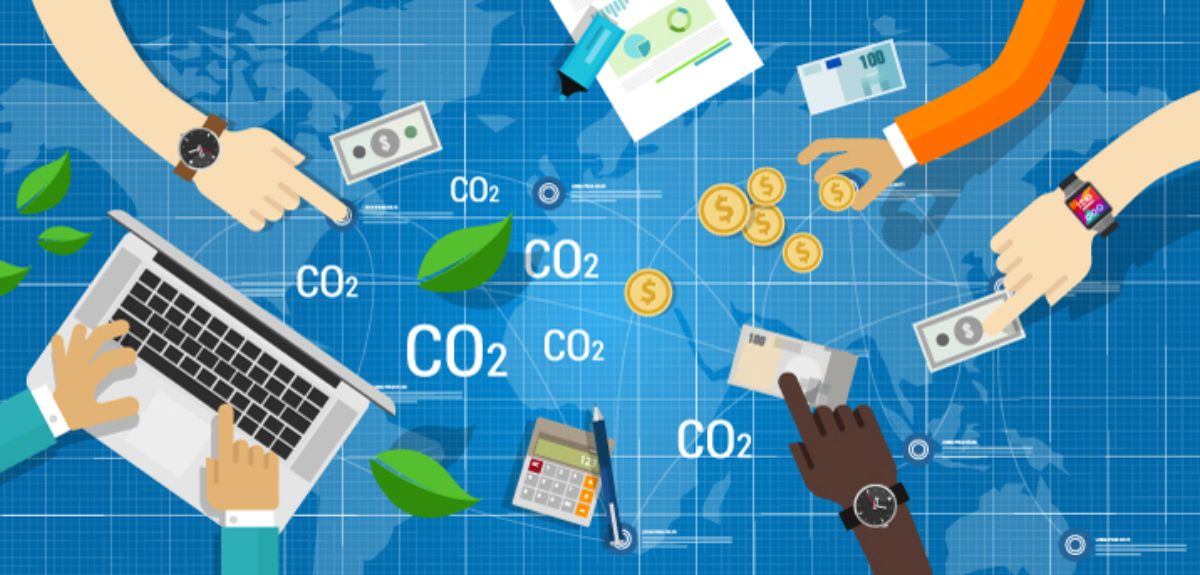
Future generations will face crippling costs without action now on carbon debt
The historic UN Paris Agreement aims to limit global temperature rise to well below 2°C in the long run, but the concentration of CO2 in the atmosphere is still rising. If this trend continues, within just 10 years the world will exceed the total CO2 emissions that are consistent with limiting global warming to no more than 1.5°C. If the Paris climate goals are to be achieved, every tonne of CO2 emitted in excess of this ‘carbon budget’ will have to be removed at a later date, creating a potentially massive and rapidly increasing ‘carbon debt.’
Future generations can be spared the crippling economic consequences of paying off this carbon debt if strategic policy action is taken now, according to ambitious plans set out by University of Oxford scientists and the International Institute for Applied Systems Analysis.
Operationalizing the net negative carbon economy, published [8 July] in Nature, argues that, to avoid this devastating scenario, funds for future carbon removal should be collected through carbon pricing. To do this, it should be treated in much the same way as financial debt.
To avoid [crippling debt], funds for future carbon removal should be collected through carbon pricing. To do this, it should be treated in much the same way as financial debt
If the proposed policy were adopted, emitters would be subject to a ‘Carbon Removal Obligation’ (CRO) and interest could be added as time goes on, establishing a legal responsibility for carbon debt repayment. Although CROs would be tradeable, by treating carbon debt like financial debt, emitters would effectively be charged a rental fee for temporarily storing CO2 in the atmosphere.
In its recently-adopted Climate Law, the European Union declared it would aim to reach net-zero greenhouse gas emissions by 2050 and net negative thereafter, potentially helping to bring down global carbon budget overshoot.
‘So far this is not more than a declaration, since any serious discussion on instruments to establish long-term responsibility for large-scale carbon dioxide removal is missing, both from the political and the academic debate,’ states Johannes Bednar, research scholar at IIASA and lead author.
Everyone using fossil fuels today is responsible for the build-up of this carbon debt. Carbon Removal Obligations completely change how we see carbon removal
Professor Myles Allen
Myles Allen, Professor of Geosystem Science at the Environmental Change Institute and Director of the Oxford Net Zero initiative, says, ‘Everyone using fossil fuels today is responsible for the build-up of this carbon debt. Carbon Removal Obligations completely change how we see carbon removal, from a futuristic “get out of jail free card” to a technology option that should be priced into decisions today.’
Dr Michael Obersteiner, the ECI's director, says, ‘Policy uncertainty is hindering the fightback against climate change, and the clock is ticking. Our proposed measures would help direct capital in the right direction today, not in 2050 when the damage is done.’
If we are to stabilise global temperature increases and avoid dangerous climate change, it is likely that at some point in my children’s lifetime, more CO2 will have to be removed from the atmosphere than is being emitted
Professor Jim Hall
Jim Hall, Professor of Climate and Environmental Risks at the ECI, says, ‘If we are to stabilise global temperature increases and avoid dangerous climate change, it is likely that at some point in my children’s lifetime, more CO2 will have to be removed from the atmosphere than is being emitted.
‘When there are ‘net negative’ emissions, carbon emissions taxes turn into a public subsidy, representing a huge fiscal burden on future generations. Carbon Removal Obligations are a fair and efficient way of paying up-front for the carbon removal which will be required in the future, whilst incentivising a fast transition away from fossil fuels now.’
True Planet: Oxford research for a changing world
The world is in a climate crisis, and Oxford researchers are at the forefront of trying to find solutions in adaptation and resilience, nature, energy transition, clean road transport and green finance.
Our researchers are working with partners in industry, government, the third sector and at other universities to address these challenges and to propose innovative approaches and solutions. Find out more about our True Planet campaign http://bit.ly/trueplanet
The Environmental Change Institute
The Environmental Change Institute at the University of Oxford was established in 1991 to organise and promote interdisciplinary research on the nature, causes and impact of environmental change and to contribute to the development of management strategies for coping with future environmental change.
The International Institute for Applied Systems Analysis
IIASA is an independent, international research institute with National Member Organizations in Africa, the Americas, Asia, and Europe.
Through its research programs and initiatives, the institute conducts policy-oriented research into issues that are too large or complex to be solved by a single country or academic discipline. This includes pressing concerns that affect the future of all of humanity, such as climate change, energy security, population aging, and sustainable development.
 New study finds that stopping weight-loss drugs is linked to faster regain than ending diet programmes
New study finds that stopping weight-loss drugs is linked to faster regain than ending diet programmes
 Honorary degree recipients for the Chancellor’s ceremony announced
Honorary degree recipients for the Chancellor’s ceremony announced